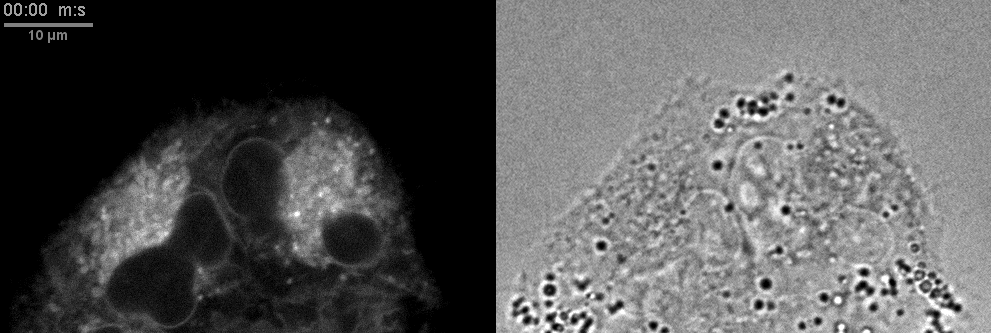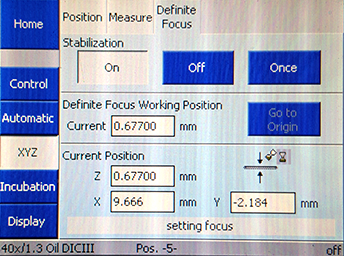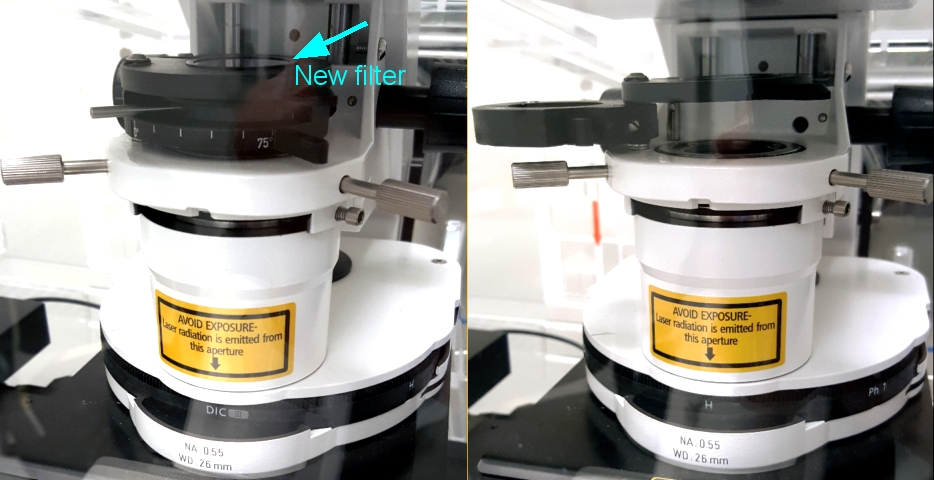
On 7 Oct 2019 a 760 nm short pass filter was installed in the condenser of the Smilow Zeiss 800 to allow for transmitted images to be taken when Definite Focus is engaged.
Defiinite Focus locks the focus in place. This is especially useful for live cell experiments.
Why? To take a movie of fluorescence and transmitted light simultaneously. (The movie below has the contrast exaggerated for webpage viewing.)

This is one of the exceptions where digital gain may help the image.
There are two ways of running the autofocus.
One is in focus strategy window.

This controls the autofocus from Zen software. Instead of "None" in the pull down menu, set to check focus at each timepoint of a timelapse experiment. This may be the better way to run a long experiment with longer intervals because it exposes the sample to IR light less frequently than free running the Definite Focus and timepoints that are off by a second or two are ok. Also, this is the way to run the system if you are doing repeated Z series through time; the autofocus would lock to the bottom before each Z series.
Free running from the touch pad is much faster because Zen software never checks it. Autofocus runs continuously. This may have the down side of the sample being exposed to more IR light, but it is fast. For single optical section continuously imaged through time, Definite Focus is preferred because of speed. The filter prevents the laser used for autofocus from obscuring the microscopy image.
This is what the touch pad looks like when running the Definite Focus in free run mode:

Where the filter is installed and how to use:

Always leave the filter in the light path.
Always set for Köhler illumination.
For imaging by confocal, use in either of these pictured configurations.
DIC at bottom when polarizing filter is in place
or
H at bottom when polarizing filter is out of the light path.